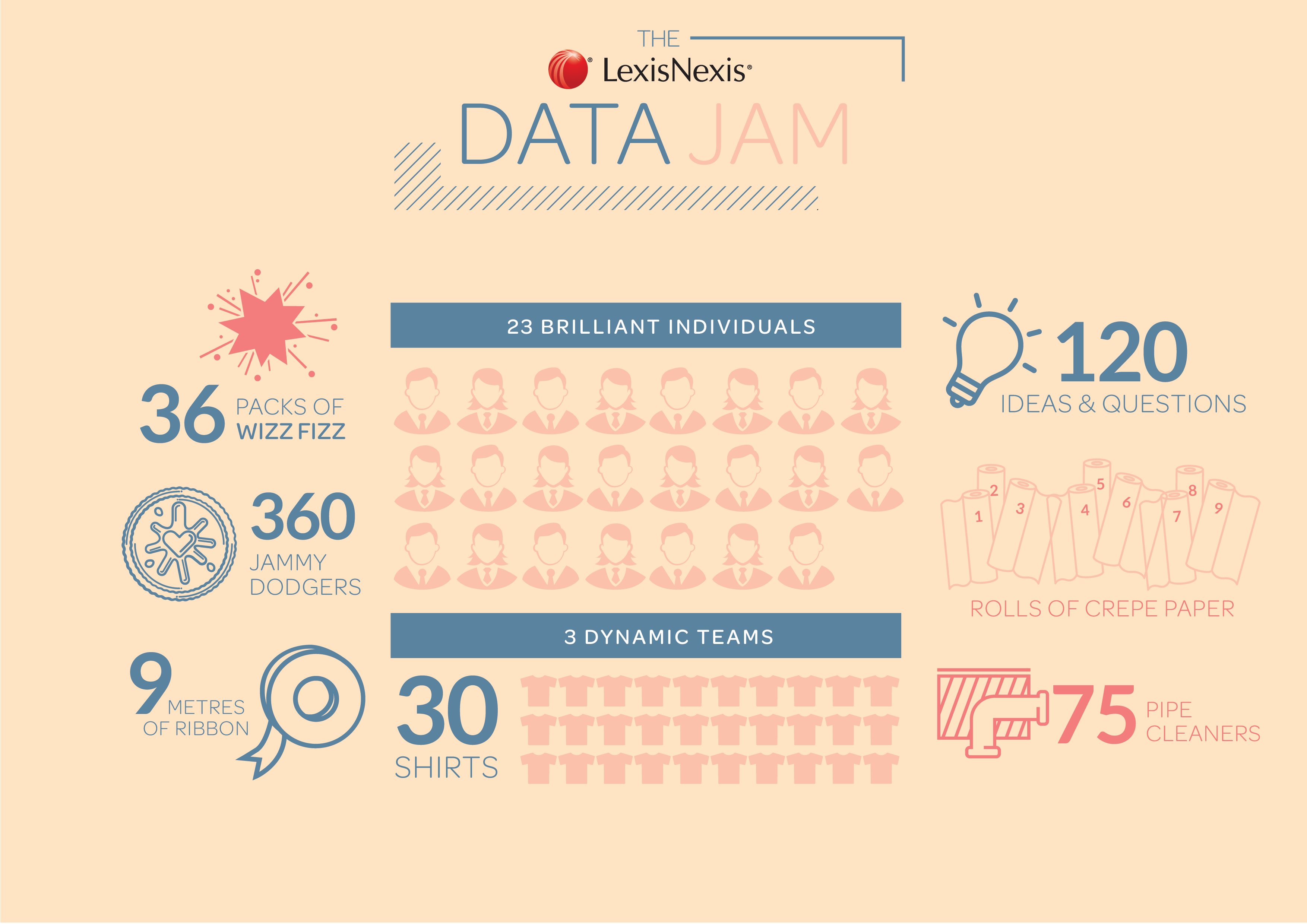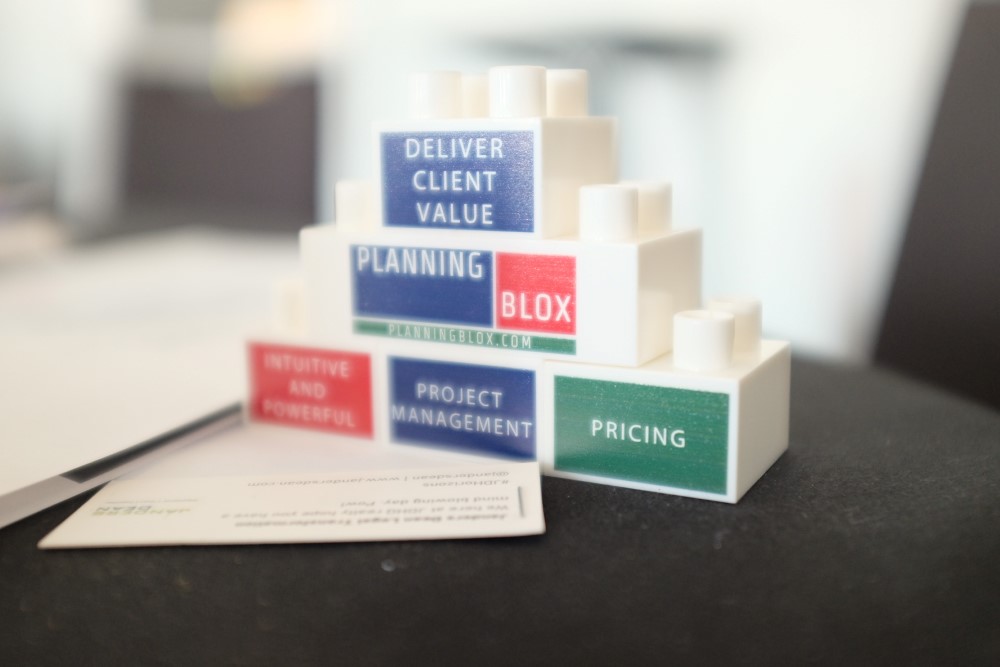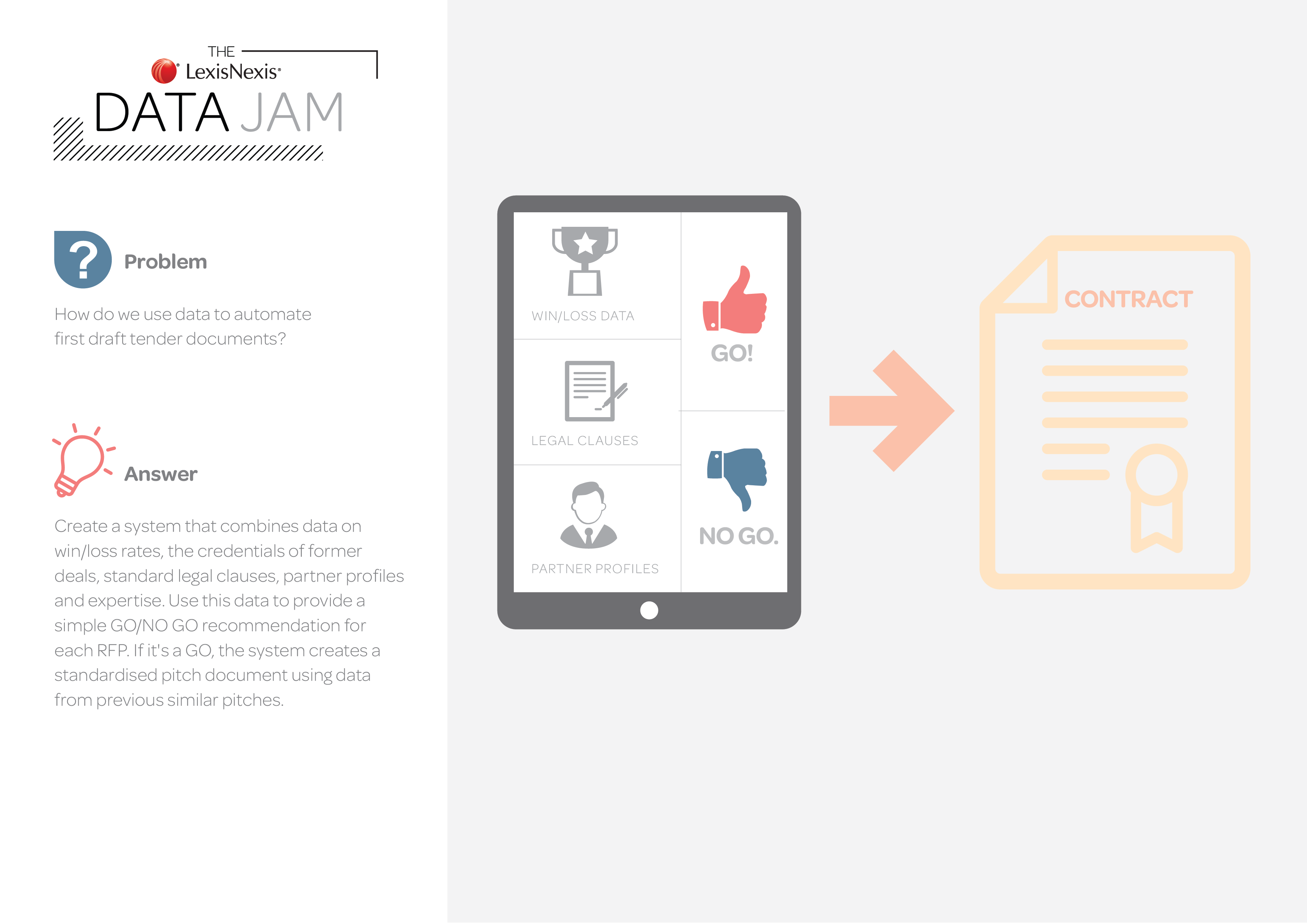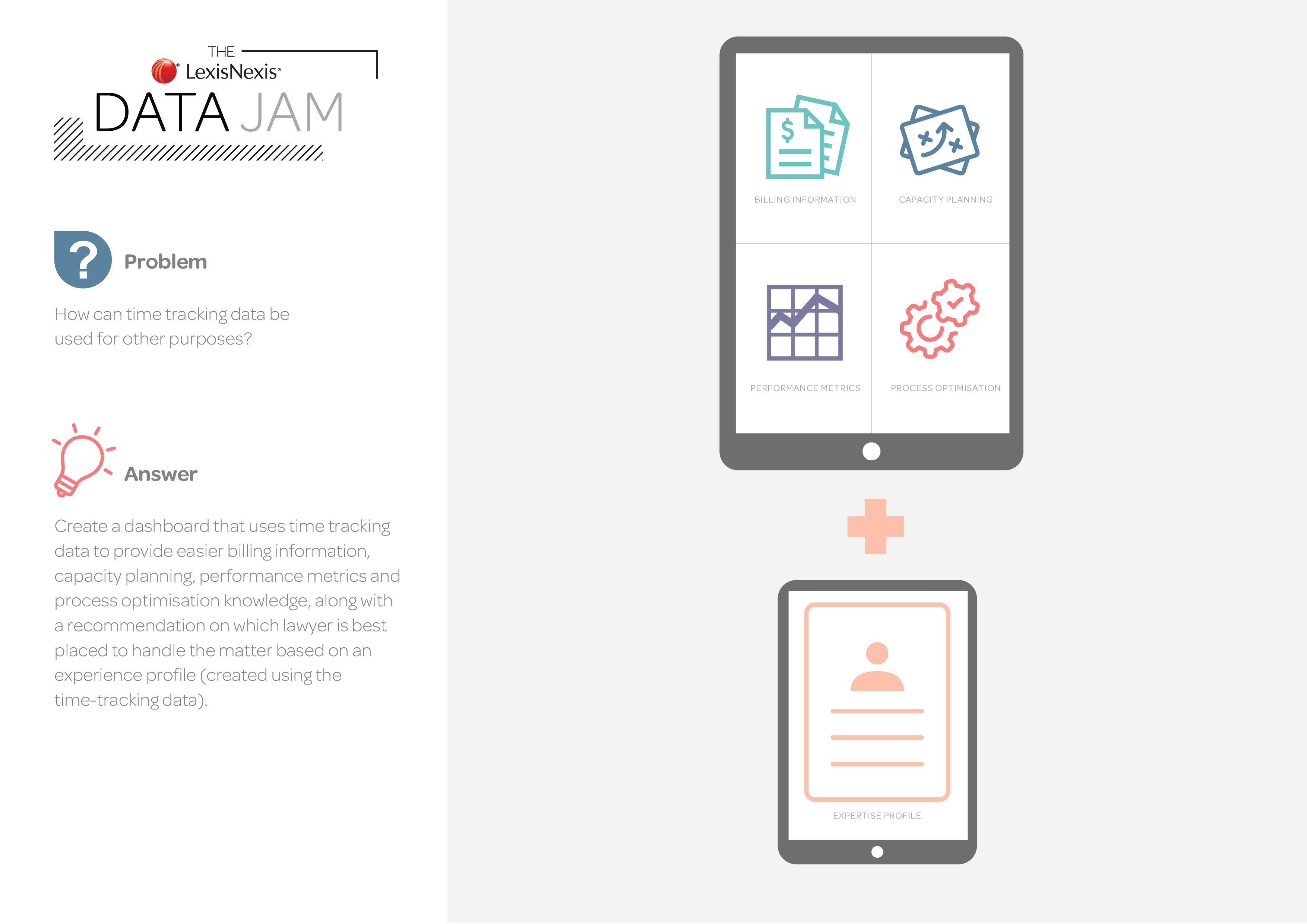The 2017 Legal Data Jam
The day dawned bright and sunny as Enid Blyton would say, and hordes of the country's brightest legal minds descended upon the stunning Pier One venue at Walsh Bay.
It would be a day of considerable intellectual debate. A day where too much legal problem solving was barely enough. A day that would challenge the mettle, nay, the very core of each and every participant.
It was, of course, the 2017 Legal Data Jam at the Janders Dean Horizons conference.
Click the image to see the full resolution infographic
Following the exchange of pleasantries and a stirring introduction from CSIRO Data61's data wizard Dr Leif Hanlen, it was down to business for the jammers.
Split into three tables, the jammers were presented with three questions (or sets of questions) to consider as a means of getting their minds into gear for the solutionising that lay ahead.
Can we automate the boring stuff?
The discussion here centred around the fact that the bottom floor of the legal industry (and many other industries) may be largely (or completely) replaced by AI in the near future.
What are the biggest pain points for the people working in those areas? Answers came thick and fast:
- Tendering
- Billing
- Time entry
- Manual entry of duplicate data (and the associated risk of human error).
So what, then, would a tech solution to this problem actually look like?
The jammers generally agreed that it would look like a template system – whereby the system would pull proposed additions (such as contract clauses, times etc) and place them into the necessary documents or timesheets awaiting approval by the human who was looking after that particular matter.
Robot helpers?
This question centred around trustworthiness in AI. So we have robots helping us, great. But how can you trust a robot if you're not sure of its processes?
A few key points emerged in the consideration of this question.
- The robot helper should be integrated through a viewpoint of cautious trust: we trust that the robot has the answer that we're looking for, it just might not get it correct at first.
- There is a need for visibility to justify the robot's decisions. It put a certain clause in a document, but where did it get that clause from? And why did it choose that place to insert it. A note/query feature should be built into the system to provide visibility on those decisions (and help the machine learn through the process).
- The robot would be considered as a 'recommendation engine' rather than an 'answers engine'.
A clumsy legal genie?
Here jammers were asked to consider what to do with a system that translates legislation through rules ('If X then Y'). But the system gets it wrong sometimes. What does 'useable' look like, and how could the rules be improved (with manageable time and effort?)
- Again, the notion of the legal genie as a recommendation engine appeared – something that can present reasonable answers most of the time is considered useful – but human oversight is still required.
- Machine learning algorithms are necessary. The genie should learn each time one of its suggestions is either accepted ('good genie, well done!') or rejected ('bad genie, remember this mistake for next time'). This would make rule improvements manageable.
- Jammers also discussed the potential for firms to open up a common data pool of public data. By increasing the data points that the genie has access to, better defined rules could be created from the outset.
Following the consideration and discussion of these questions (and with data-driven, system-design thought patterns sufficiently engaged), it was time for a brief spot of lunch and general harbour gazing before the business end of the day began – prototyping.
The jammers were invited to look upon a table full of post-it notes: the questions and thoughts arising from the morning's deliberations. From here they would select the problems that they would address and design prototype solutions for in the next session.
The problems, solutions and prototype designs are laid out below.
Problem – How do we use data to automate first draft tender documents?
Answer – create a system that combines data on win/loss rates, the credentials of former deals (based on client success), standard legal clauses, partner profiles and expertise. The system would use this data to provide a simple go/no go recommendation for each RFP. If the decision is GO, the system can put together a standardised pitch document using the data from previous similar pitches. All of this would then be reviewed by a supervising human.
Click the image to see the full resolution infographic
Problem – How do we train the lawyer of the future?
Answer – Design and implement an onboarding/training program that encompasses cross discipline training (using juniors for LPM / client engagement), culture, AI decision support, and robust processes for supervision over the top.
Click the image to see the full resolution infographic
Problem – How can time tracking data be used for other purposes?
Answer – Create a dashboard that uses time tracking data to provide easier billing information, capacity planning, performance metrics and process optimisation knowledge, along with a recommendation on which lawyer is best placed to handle the matter based on an experience profile (created using the time-tracking data).
Click the image to see the full resolution infographic
Following a presentation to their fellow jammers and the exchange of further pleasantries, the 2017 Legal Data Jam was brought to a close. But there were a few key takeaways (and, in the spirit of true design thinking, further problems to be considered).
- The consensus was that the data-driven advances available in legal will be a long way from developing full credibility: recommendations from AI systems will always need to be reviewed by humans.
- There was general agreement that this is what the job of lawyering looks like in the future. Using data and tech to increase efficiency and minimise those ground-level tasks, while focussing on the more critical and empathetic elements of the profession.
- There will be a hearts and minds battle for AI as the technology gains credibility not just amongst lawyers, but clients as well. Would your clients be comfortable knowing their contracts were written by a machine?
- It seems that AI is set to dominate the lower-levels and menial areas of legal work, a space previously occupied by paralegals and junior lawyers. A robust conversation (which is beginning now) around how to adequately train juniors in the future needs to take place sooner rather than later.
We're looking forward to seeing the jammers again in 2018!
Check out the full photo album on our Facebook page here.
DOWNLOAD our Legal Analytics whitepaper 'The Future is Insight'
 LexisNexis
LexisNexis









